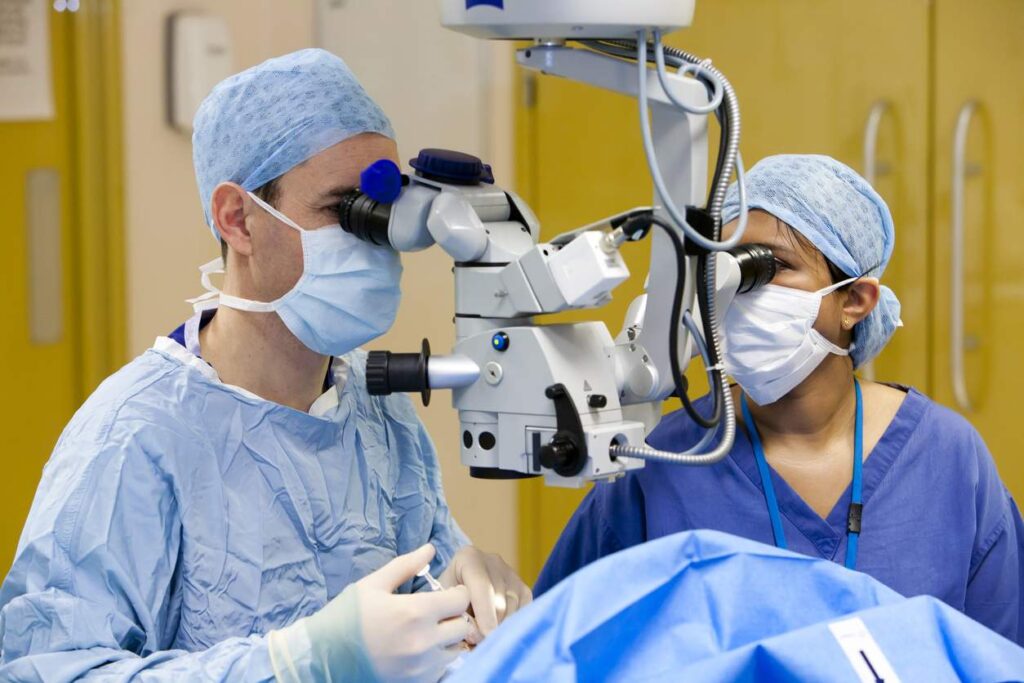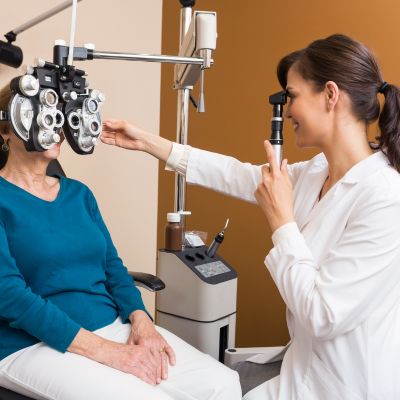Introduction
Imagine not being able to see your grandchild’s smile clearly. Or struggling to read your favorite book because the words blur and dance across the page. If you’re living with cataracts, these moments might feel frustratingly familiar.
Cataracts happen when the clear lens of your eye becomes cloudy, making everyday vision dull or hazy. It’s a natural part of aging for many, but that doesn’t mean you have to live with it forever.
Thankfully, cataract surgery has come a long way—and in 2025, it’s smarter, safer, and more personalized than ever. Whether you’re just starting to notice vision changes or you’ve been putting off surgery, this guide will walk you through what to expect and why there’s never been a better time to see the world clearly again.
Before the Surgery: What to Expect
When you first visit your eye doctor, they’ll start by listening. They want to understand how your vision is affecting your daily life—whether it’s difficulty driving at night, watching TV, or recognizing faces.
You’ll go through a series of painless eye tests to check your vision and the extent of the cataract. These tests help determine the best lens type for your specific needs. One of the biggest advancements in 2025 is how personalized these lens choices have become. Your new lens can now be tailored to match your lifestyle—whether you want to read without glasses, reduce glare at night, or correct astigmatism.
Naturally, many people feel nervous about the idea of eye surgery. That’s completely normal. But cataract surgery today is one of the most common and successful procedures in the world. It’s done millions of times each year, and patients walk away not only with better vision—but often with renewed confidence too.
During the Surgery: A Step-by-Step Walkthrough
Surgery day may feel like a big moment—but it’s often much easier than people expect.
You’ll arrive at the surgical center in comfortable clothes, and after a quick check-in, a friendly nurse will guide you through the prep. Your eye will be numbed with special drops—no needles, no stitches. Most people stay fully awake during the surgery, though you might be offered a mild sedative to help you relax.
The procedure itself is quick—usually 15 to 30 minutes. Using tiny instruments and advanced laser technology, the cloudy lens is gently removed and replaced with a crystal-clear artificial one.
And that’s it. No pain, no scary sensations. Many patients are surprised at how smooth the experience is. Some even say, “I can’t believe it’s already done.”
The Moment After: Seeing Again
The first few hours after surgery are often described as magical.
You might wear an eye shield at first, but as you remove it later that day or the next morning, the world begins to open up. Colors are richer. Light is crisper. And for many, it’s the first time in years that their surroundings feel truly sharp and alive.
Some patients tear up with emotion. One man shared that he hadn’t seen the details of his wife’s face clearly in over five years. A woman told us she went home and couldn’t stop looking at the leaves on trees—marveling at their edges and shades of green.
These moments are priceless—and increasingly common thanks to the latest cataract surgery technology.
Recovery: The Next Few Days to Weeks
The recovery process is generally gentle and straightforward.
You’ll use prescription eye drops for a few weeks to help healing and prevent infection. You might feel some mild itching or a gritty sensation in your eye, but it usually fades within a day or two.
Follow-up appointments help ensure your eye is healing properly. Most patients return to normal routines within a few days.

Common questions include:
- Can I drive soon? Yes—usually within 24 to 48 hours, once your vision clears and your doctor gives the go-ahead.
- Will it hurt later? Most people experience no pain, just mild discomfort at most.
- How long until I see perfectly? Many notice improvement right away, but full healing can take a few weeks.
In 2025, even the recovery has improved, with gentler post-op regimens and better medications to keep your eye comfortable and protected.
Emotional Transformation: From Foggy to Free
The physical benefits of cataract surgery are obvious—but the emotional transformation is just as powerful.
People often describe a renewed sense of independence. They can drive again without fear. Read menus in restaurants. Watch movies, knit, cook, or play cards—all without struggling.
There’s also an inner shift. Seeing clearly can make you feel seen again. You’re no longer sitting out of life’s small moments. Confidence returns. You might catch yourself smiling more, walking taller, or feeling less hesitant in social situations.
One patient, a retired teacher, shared how she felt “more like herself” again after surgery. “It was like the world gave me a big hug and said, ‘Welcome back.’”
Conclusion
Cataract surgery in 2025 is not just a medical procedure—it’s a life upgrade.
With safer techniques, smarter lens options, and faster recovery, there’s never been a better time to say goodbye to cloudy vision. Whether you’re a senior looking to regain your independence or a loved one helping someone through this journey, know that hope and clarity are within reach.
Talk to a trusted eye specialist. Ask questions. Share your concerns. And take that first step toward seeing the world as it was meant to be seen—clear, bright, and full of life.
Because the truth is, when your vision improves, so does everything else.

